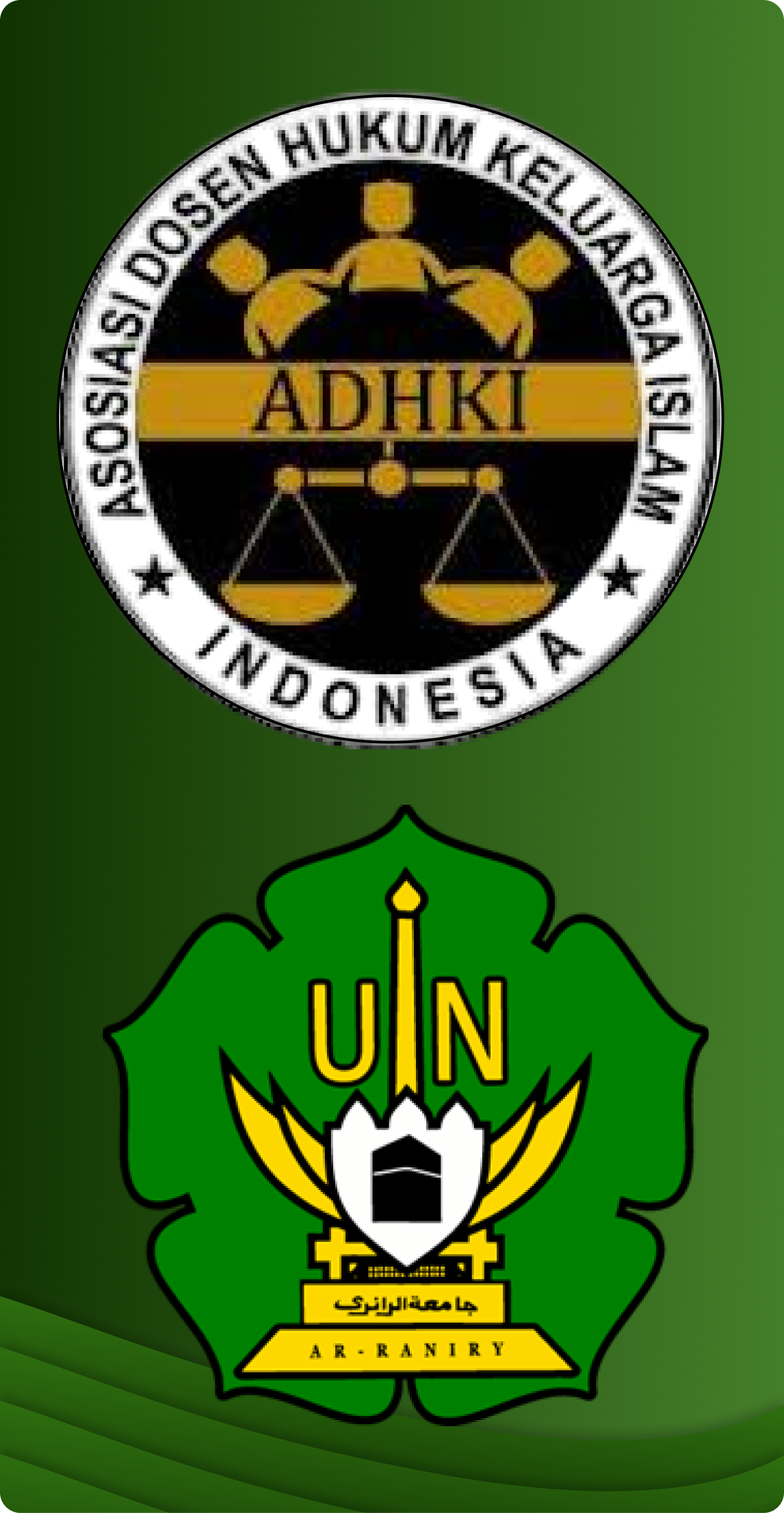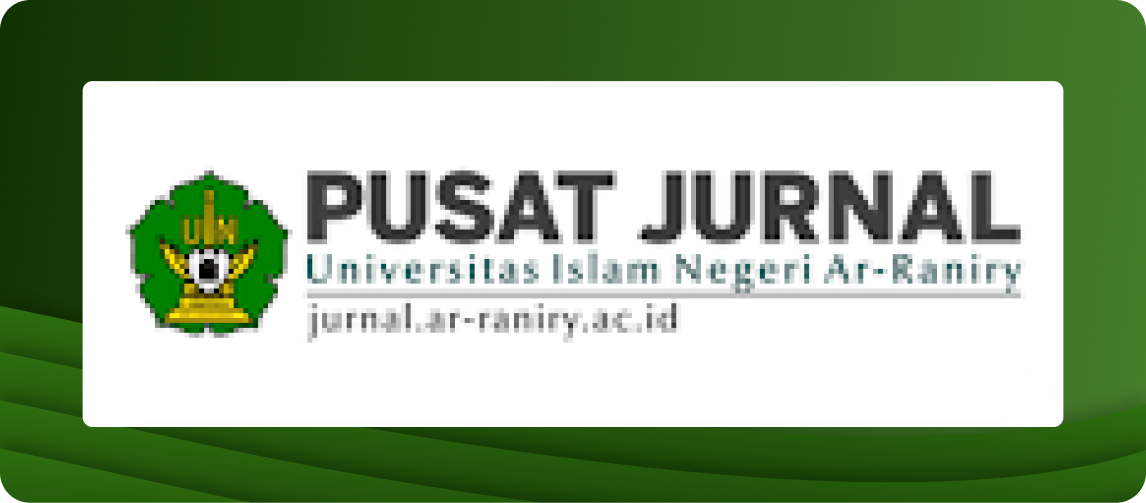The Problem of Interfaith Marriage in Indonesia: A Juridical-Normative Approach
DOI:
https://doi.org/10.22373/ujhk.v6i2.20059Keywords:
Marriage, interreligious, juridical-normative, Islamic lawAbstract
Interfaith marriage is a marriage between the bride and groom of different religions and beliefs which is a problem in Islamic law in Indonesia. The regulation regarding the prohibition of interfaith marriage is affirmed in Article 2 paragraph (1) of Law Number 1 of 1974 concerning Marriage. The focus of this study is to analyze the Indonesian legal rules regarding interfaith marriage that are increasingly emerging in Indonesia. The research method uses normative juridical legal methods, data collection techniques namely by analyzing articles, books and references related to the discussion. The results showed that interfaith marriage is not justified in Indonesian legislation with the argument that interfaith marriage is contrary to the religious teachings of Indonesian citizens and can eliminate the basic rights of marriage for husbands, wives and children. As a result of the ban on interfaith marriage, Indonesian citizens are guaranteed legal protection during marriage and after divorce.
References
Achmad, Asfi Burhanudin. “Perkawinan dan Keharusan Pencatatanya.” El-Faqih: Jurnal Pemikiran dan Hukum Islam 4, no. 1 (2018). https://doi.org/10.29062/faqih.v4i1.6.
Anggreini, Palandi, Carolina. “Analisa Yuridis Perkawinan Beda Agama Di Indonesia.” Lex Privatum 1, no. 2 (2013).
Aiyub Kadir, Muhammad Ya'kub and Fachrian Rizki, “Interfaith Marriage in Indonesia: A Critique of Court Verdicts,” Yuridika 38, No. 1 (2023). DOI:10.20473/ydk.v38i1.38099.
Biro Hukum dan Humas Badan Urusan Administrasi MA RI. Himpunan Peraturan Perundang-Undangan yang Berkaitan dengan Kompilasi Hukum Islam Serta Pengertian dalam Pembahasannya. Jakarta: Mahkamah Agung RI, 2011. https://perpustakaan.mahkamahagung.go.id/read/ebook/23.
Fitrawati. “Diskursus Perkawinan Beda Agama Di Indonesia Dalam Tinjauan Universalisme Ham Dan Relativisme Budaya.” JURIS: Jurnal Ilmiah Syariah 20, no. 1 (2021). https://doi.org/10.31958/juris.v20i1.2825.
Hamdi, Isnadul. “Ta’aruf Dan Khitbah Sebelum Perkawinan.” JURIS: Jurnal Ilmiah Syariah 16, no. 1 (2017).
Hanifah, Mardalena. “Perkawinan Beda Agama Ditinjau dari Undang-Undang Nomor 1 Tahun 1974 Tentang Perkawinan.” Soumatera Law Review 2, no. 2 (20 November 2019): 297. https://doi.org/10.22216/soumlaw.v2i2.4420.
Krausen, Halima. “Interfaith Families.” European Judaism 53, no. 1 (2020). https://doi.org/10.3167/ej.2020.530113.
Marzuki, Peter Mahmud, Penelitian Hukum, Jakarta: Kencana, 2018.
Masduri. “Tajdid Dalam Islam.” Jurnal Alasma: Media Informasi dan Komunikasi Ilmiah 3, no. 1 (2021). https://jurnalstitmaa.org/alasma/article/view/56.
Munawar, Akhmad. “Sahnya Perkawinan Menurut Hukum Positif yang Berlaku di Indonesia.” Al-Adl : Jurnal Hukum 7, no. 13 (2015). https://doi.org/10.31602/al-adl.v7i13.208.
Palandi, Anggreini Carolina. “Analisa Yuridis Perkawinan Beda Agama di Indonesia.” Lex Privatum 1, no. 2 (2013). https://ejournal.unsrat.ac.id/index.php/lexprivatum/article/view/1717.
Puniman, Ach. “Hukum Perkawinan Menurut Hukum Islam dan Undang-Undang No. 1 Tahun 1974.” Jurnal Yustitia 19, no. 1 (Mei 2018). https://doi.org/10.53712/yustitia.v19i1.408.
Republik Indonesia. Inpres Nomor 1 Tahun 1991 Tentang Penyebarluasan Kompilasi Hukum Islam. Jakarta, 1991.
Republik Indonesia.Undang-Undang Republik Indonesia Nomor 1 Tahun 1974 Tentang Perkawinan. Jakarta, 1974. https://peraturan.bpk.go.id/Home/Details/47406/uu-no-1-tahun-1974.
Republik Indonesia. Undang-Undang Republik Indonesia Nomor 16 Tahun 2019 Tentang Perubahan Atas Undang-Undang Republik Indonesia Nomor 1 Tahun 1974 Tentang Perkawinan. Jakarta, 2019. https://peraturan.bpk.go.id/Home/Details/122740/uu-no-16-tahun-2019.
Republik Indonesia. Undang-Undang Republik Indonesia Nomor 39 Tahun 1999 Tentang Hak Asasi Manusia. Jakarta, 1999. https://peraturan.bpk.go.id/Home/Details/45361/uu-no-39-tahun-1999.
Rofiq, Ahmad. Hukum Perdata Islam. Jakarta: Rajawali Pers, 2013.
Sian, Katy Pal. “‘Love Jihad’, ‘Forced’ Conversion Narratives, and Interfaith Marriage in the Sikh Diaspora.” Religions 12, no. 12 (2021). https://doi.org/10.3390/rel12121085.
Suhasti, Ermi, Siti Djazimah, and Hartini. “Polemics on Interfaith Marriage in Indonesia between Rules and Practices.” Al-Jami’ah 56, no. 2 (2018). https://doi.org/10.14421/ajis.2018.562.367-394.
Sumardi, D., R. Lukito, and M.N. Ichwan. “Legal Pluralism within the Space of Sharia: Interlegality of Criminal Law Traditions in Aceh, Indonesia.” Samarah 5, no. 1 (2021): 426–49. https://doi.org/10.22373/sjhk.v5i1.9303.
Sumardi, Dedy. “Islam , Pluralisme Hukum Dan Refleksi Masyarakat Homogen.” Asy-Syirah Jurnal Ilmu Syaria’ah Dan Hukum 50, no. 2 (2016).
Soemiyati. Hukum Perkawinan Islam dan Undang-Undang Perkawinan. Yogyakarta: Liberty Yogyakarta, 1989.
Wafa, Moh. Ali. Hukum Perkawinan di Indonesia Sebuah Kajian dalam Hukum Islam dan Hukum Materil. Tangerang Selatan: Yayasan Asy-Syari’ah Modern Indonesia, 2018.
Wahyuni, Sri. “Kontroversi Perkawinan Beda Agama di Indonesia.” Jurnal Hukum Islam 8, no. 1 (2016). https://doi.org/10.28918/jhi.v8i1.561.
Downloads
Published
Issue
Section
License
Authors who publish in El-Usrah: Jurnal Hukum Keluarga agree to the following terms:
Authors retain copyright and grant the journal right of first publication with the work simultaneously licensed Attribution-ShareAlike 4.0 International (CC BY-SA 4.0) that allows others to share the work with an acknowledgment of the work's authorship and initial publication in this journal.
Authors are able to enter into separate, additional contractual arrangements for the non-exclusive distribution of the journal's published version of the work (e.g., post it to an institutional repository or publish it in a book), with an acknowledgment of its initial publication in this journal.
Authors are permitted and encouraged to post their work online (e.g., in institutional repositories or on their website) prior to and during the submission process, as it can lead to productive exchanges, as well as earlier and greater citation of published work. (See The Effect of Open Acces)

















